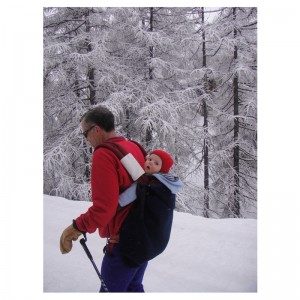
![]() The last two posts—on idleness and stillness—have pushed me toward some further reading and exploring around these and other related concepts. While such subjects have been themes of my reflection in the past, it has been good to revisit them and to gather insight from some new sources.
The last two posts—on idleness and stillness—have pushed me toward some further reading and exploring around these and other related concepts. While such subjects have been themes of my reflection in the past, it has been good to revisit them and to gather insight from some new sources.
Though they use somewhat different terminology, both Ricardo Semler and Pico Iyer state that they are most productive when their minds are at rest. In an apparent paradox, Semler proclaims that idleness is a state we should actively seek, because learning to be idle will make us more effective in our work and our lives. He laments the bad reputation that idleness seems to have, in our world of constant action and connection. We should understand that idleness tends to be “the time when you solve problems…It is from idleness that the best things I’ve ever done have come.”
Pico Iyer also feels that stillness is the condition from which his best efforts have come. When he describes life in his small apartment in Kyoto, Japan—where he has lived for more than two decades with no car, no bicycle, no cell phone, and no need to manage time—what he seems to enjoy most is the way his days unfold. He declares, with a palpable fascination in his voice, that they stretch out in front of him, “like an open meadow”. He takes two long walks daily, and he says that it is in these solitary moments that “I get most of my work done…Most of my writing takes place a long way from the desk.”
Of course, Iyer’s way of life is one that most people would find somewhat extreme, and thoroughly impractical. Most of us are not world-renowned travel writers who can choose to spend weeks and months completely disconnected from the rest of the world while still getting our work done, earning our living, and so on. Nonetheless, I do see elements of his unique experience that we can apply to our daily lives.
It struck a chord with me that Iyer does most of his “writing” on his long twice-daily walks, or that the best things Semler has done have come from idleness. In fact, I could make similar assertions about my work. While my life is undeniably quite different from Iyer’s—far busier with worldly concerns, and more immersed in modern technology—I usually do my most interesting thinking and working by creating moments of stillness in my day. It is in those moments that I find solutions to lingering problems, come to see old things from a new angle, or do my best writing.
My moments of stillness often involve physical activity, and living in the mountains facilitates this. Many are the days where I can sneak away for an hour or two, hike up a hill or go ski touring, often with one of my children napping in a carrier on my back or in a stroller. While I do enjoy the outdoor activity and exercise, above all else these breaks are about allowing my brain to be idle.
Unless some pressing issue has taken hold of me, I simply let my mind wander as I take in the natural surroundings. Free from any type of interruption, it is here that I—somewhat mysteriously, as far as I can see—come up with my most compelling insights or answers.
Friends in town often ask if I would like company on my daily jaunts, or when I take off for a few quick downhill runs at the local ski mountain. While I do often ski and hike with my family and friends, during the week I usually prefer to go it alone, preserving the moments of stillness that offer my best opportunities to simply unplug and reflect. If I ever have “Eureka” moments, superb ideas or solutions that seem to arrive from nowhere, they tend to happen when I am walking, cycling or skiing on my own.
